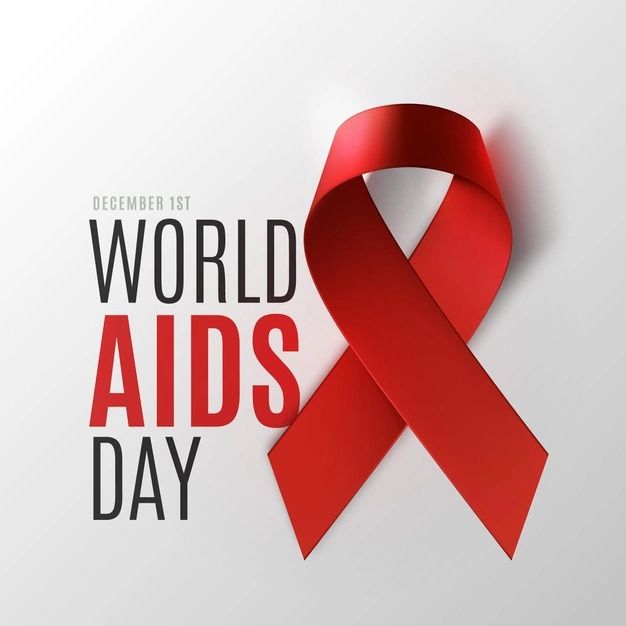
The Impact of World AIDS Day
The global fight against AIDS (acquired immunodeficiency syndrome) presses on every day of the year. However, each year on December 1, governments and health authorities worldwide pause to recognize World AIDS Day. This important health holiday serves as a reminder of the efforts of researchers, healthcare providers, and patients alike whose lives have been impacted by the battle against this virus.
On the most recent World AIDS Day, in 2022, the Biden administration released a global strategy to end AIDS. This new five-year strategy aims to end the HIV/AIDS pandemic by the year 2030. Public health communicators and members of the general public who stay informed about HIV/AIDS prevention and treatment can help increase awareness about this important public health issue. More awareness means more testing, less stigma, and, hopefully, more prevention.
Here’s what you need to know about the impact of World AIDS day, including more about the administration’s commitment to putting an end to this health condition once and for all.
Why Is the Biden Administration Focused on Ending the HIV/AIDS Pandemic?
The scientific community has come a long way in its efforts to spread awareness about AIDS and HIV (human immunodeficiency virus, the virus that causes AIDS). However, there is still much work to be done, which is why the Biden administration is doubling down on its commitment to end the HIV/AIDS pandemic. Although effective therapies are available for people who contract HIV/AIDS, as well as effective prevention methods, many people who spread this disease are still unaware that they have the virus. In fact, according to the U.S. Centers for Disease Control and Prevention (CDC), as many as 40 percent of new HIV infections are passed along by people who are unaware that they are infected with the virus.
The Significance of Announcing a Commitment to End AIDS on World AIDS Day
World AIDS Day has been commemorated since 1988. Aside from being an important way to remember the people who have lost their lives from HIV/AIDS and to increase HIV/AIDS awareness, World AIDS Day is significant for another reason—it was the first health holiday to be recognized worldwide. The celebration that occurred in 2022 marked the 20th anniversary of PEPFAR, which is The United States President’s Emergency Plan for AIDS Relief.
For this year’s World AIDS Day, the Biden-Harris administration released a five-year strategy for how it plans to end the HIV/AIDS pandemic by 2030. According to the administration, this strategy aligns with its mission to commemorate the millions of people who have died of this illness, as well as the more than 37 million people around the world who are currently living with this condition.
Drawing attention to World AIDS Day with this new strategy also helped advance the World AIDS Day 2022 themes of “Equalize,” and Putting Ourselves to the Test: Achieving Equity to End HIV.” These important themes recognized that the same health disparities that have disproportionately affected communities during the COVID-19 pandemic have also plagued the nation’s fight against HIV/AIDS.
What Are the Components of the Five-Year Plan to End HIV/AIDS?
The Biden administration has made its entire strategy viewable here. The strategy is structured into the following key parts:
Illuminating the progress of the fight against AIDS to date. The U.S. government has invested more than $100 billion dollars over the past 20 years. It has reached critical milestones of delivering HIV prevention and treatment that have effectively cut AIDS-related deaths by 64 percent.
Addressing remaining challenges. These include making progress on treatment accessibility worldwide and matching HIV/AIDS care to the aging world population. It also includes bending the curve on new HIV infections (reducing them to 370,000 globally by 2025), closing equity gaps, strengthening fragile health systems, and preventing new outbreaks from reversing progress.
Five strategic pillars, including:
- Health equity for priority populations
- Sustaining the response
- Public health systems and security
- Transformative partnerships
- Follow the science
The administration’s hope is that this strategy will inspire action and instill determination in the fight against this disease.
How You Can Help Support the Administration’s Goal to end HIV/AIDS
One of the most important things that you can do to support the fight to end AIDS is simply to educate yourself about HIV/AIDS and talk about this condition with others in your personal and professional networks. This can help increase solidarity, reduce stigma, and improve public health by encouraging people to get HIV tested. Another vital aspect in the fight against HIV/AIDS is spreading awareness about PrEP (pre-exposure prophylaxis), which is a medication that can be used to prevent contracting HIV/AIDS in the first place. According to the CDC, PrEP medication can help reduce a person’s risk of contracting HIV from sex by 99 percent when taken as prescribed.
How to Learn More about the Strategy to End the HIV/AIDS Pandemic by 2030
The impact of World AIDS Day 2022 is undeniable, as this health holiday inspired the release of the Biden administration’s strategy to end HIV/AIDS by 2030. To learn more about the strategy, and to read the entire document yourself, visit the PEPFAR five-year strategy site.
Research and materials for this article were compiled, written, and distributed on behalf of the National Public Health Information Coalition. The views and opinions expressed in this blog are those of the various authors and do not necessarily reflect the official policy or position of the National Public Health Information Coalition or its members.
Sources:
[1] Press Release: PEPFAR Commemorates World AIDS Day. https://www.state.gov/pepfar-commemorates-world-aids-day-2022/
[2] HIV testing. https://www.cdc.gov/hiv/testing/index.html
[3] PEPFAR Five-year Strategy. https://www.state.gov/pepfar-five-year-strategy-2022/
[4] World AIDS Day Resources. https://www.glaad.org/publications/worldaidsday
[5] PEPFAR World AIDS Day 2022. https://www.state.gov/pepfar-world-aids-day-2022/
[6] World AIDS Day 2022 – Equalize. https://www.who.int/news-room/events/detail/2022/12/01/default-calendar/world-aids-day-2022-equalize

